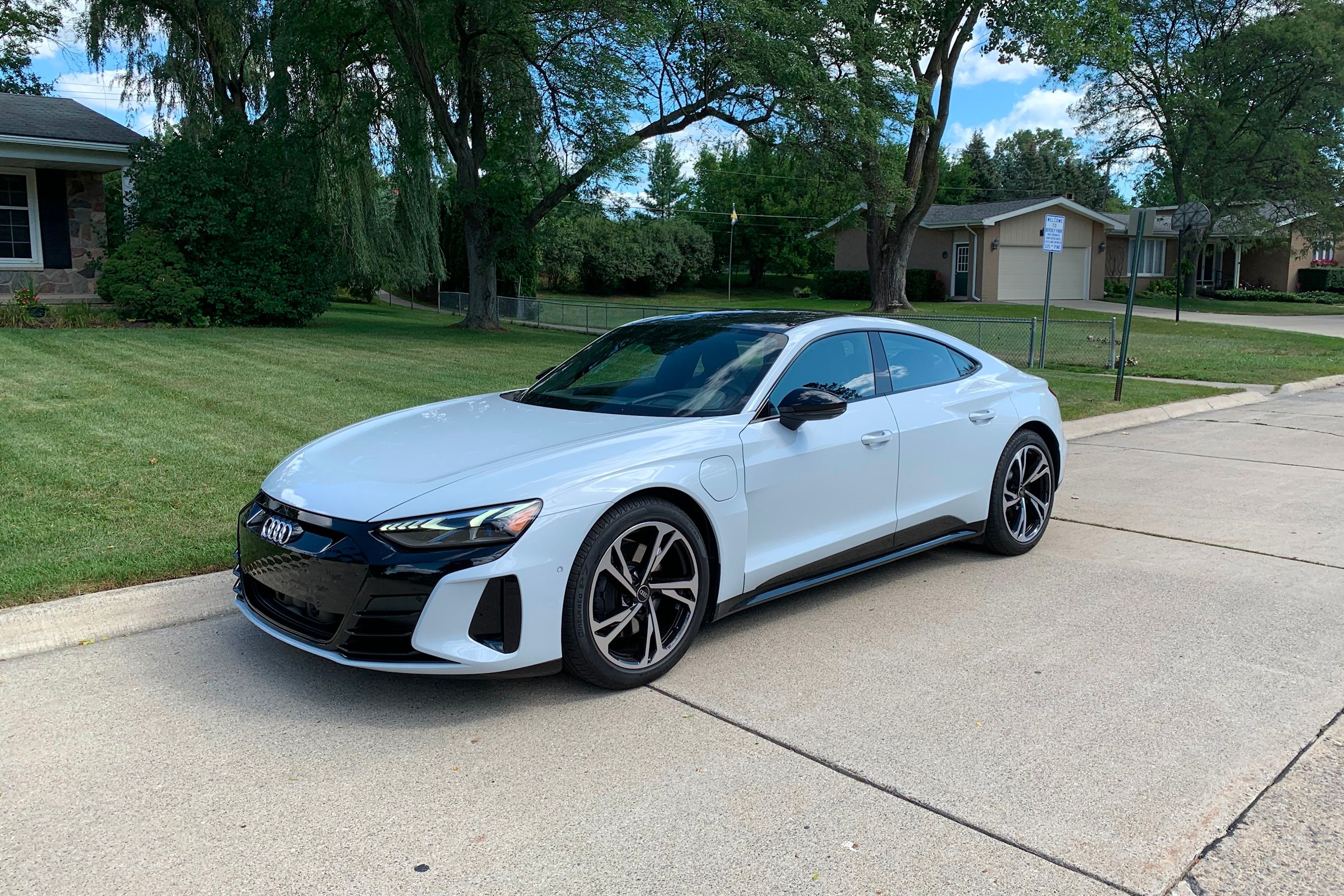
It seems that 2021 will be the year of the luxury EV. Porsche has released the Taycan Cross Turismo, Volkswagen is preparing to bring the ID.6 to market, and then we have these two: the BMW i4 and Audi's e-tron GT. While the i4 is a more obvious departure from the concept version in its production guise, Audi has kept the e-tron GT very similar to the car we were first teased with. Hell, even the graphics on the prototypes looked very similar to what the concept wore.
More often than not, many concept styling cues are left on the cutting room floor due to various reasons ranging from cost to engineering to ease of use, so a dramatically designed concept is not always best. So, is BMW's more pared-back approach better, or is the futuristic e-tron GT the design icon of 2021?
Let's start with first impressions. The Audi is certainly more visually dramatic. The moment you first see it, all you can think is, "Wow, that's a pretty car." Compare that to the Bimmer, where your first response was probably more along the lines of, "Oh, is that it?" It feels like something is missing, like some level of drama or some kind of groundbreaking flourish just isn't there. Well, the reasons behind each car's look are different.
For Audi, the e-tron GT is intended to become a future design icon, like the Porsche 911. Its styling will influence pretty much every fast car that Audi produces from now on, yet it still retains typical Audi styling elements like those pronounced rear haunches.
With the Bimmer, Munich wanted the i4 to look and feel as much like a regular car as possible. BMW doesn't expect you to post it all over Instagram the moment it's delivered. Instead, the automaker wants you to embrace electric vehicles as the same classic PB&J sandwich you've always loved, but with a different type of bread.
Despite all we've just said about how BMW wants the i4 to be accepted as just another car, there are clear design elements included that are intended to highlight its electric powertrain. From the blue accents to the aerodynamically efficient wheels and basic fascias at either end of the car, there are definite clues to the i4's power source.
Compare that to the Audi. Sure, you have a blanked-off front end and the obvious absence of exhaust tips, but those bugs turn into features when incorporated into a fresh new design. The rear has a faux diffuser that distracts you from the lack of an exhaust. In the front, the Singelframe grille outline is integrated beautifully despite no air intakes hiding behind it. The result is a sexy body that looks like it could be draped over a traditionally-powered car with minimal adjustment.
Each brand does things differently on the profile too. While BMW has chosen to add very subtle accents to the fenders, with these leading to a stripe that runs down the side of the car, on the Audi, those vents are obviously real and add menace.
Another thing that Audi has done brilliantly is allow for the front doors to be big enough for drivers to get in and out with ease while still giving rear passengers enough space to get in through adequately-sized doors. All of this gives you a proper coupe-like design. With BMW's i4, the glasshouse is more sharply defined. That fake Hoffmeister kink makes its way over from the regular 4 Series, and the door handles are placed low to try to hide the sheer mass of metal in this body.
Again, Audi's car looks like a low-slung supercar with four doors, while the i4 simply looks like a tall and ungainly sedan that isn't trying hard enough.
Ultimately, each manufacturer has built a four-door, coupe-style EV, but with different purposes. The Bimmer is a car that is in many ways based upon an existing car, and BMW has to ram home its new design language on as many models as possible in order for people to accept it. For Audi, an entirely new car was being created from scratch. That means that designers had free reign. As a result, it looks sculpted, sleek, and sexy. BMW is now dealing with the repercussions of its own iffy design choices that it must live with. While Audi is subtly integrating new design cues in a classically beautiful shape, BMW is merging too many new and old ideas into one. Somebody give the artists in Munich a blank sheet of paper and an unlimited budget and we guarantee that you'll see a beautiful yet historically respectful machine. In the meantime, the Audi is gracing my desktop wallpaper.
